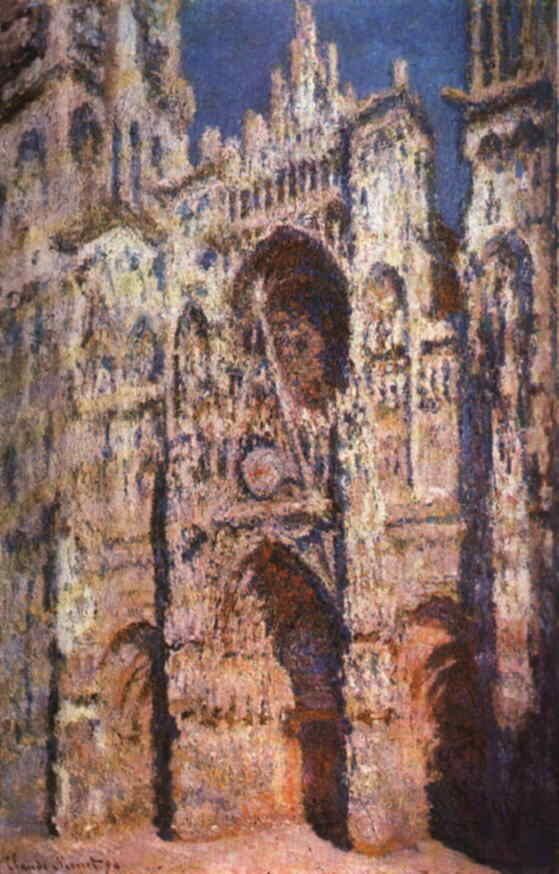Year 1894 (1894) | ||
 | ||
Dimensions 107 cm × 73.5 cm (42 in × 28.9 in) Location Musée d'Orsay, Paris, France | ||
The Rouen Cathedral series was painted in the 1890s by French impressionist Claude Monet. The paintings in the series each capture the façade of the Rouen Cathedral at different times of the day and year, and reflect changes in its appearance under different lighting conditions.
Contents
Date
The Rouen Cathedral paintings, more than thirty in all, were made in 1892 and 1893, then reworked in Monet’s studio in 1894. Monet rented spaces across the street from the cathedral, where he set up temporary studios for the purpose. In 1895, he selected what he considered to be the twenty best paintings from the series for display at his Paris dealer’s gallery, and of these he sold eight before the exhibition was over. Pissarro and Cézanne visited the exhibition and praised the series highly.
Historically, the series was well-timed. In the early 1890s, France was seeing a revival of interest in Catholicism and the subject was well received. Apart from its religious significance, Rouen Cathedral–built in the Gothic style–represented all that was best in French history and culture, being a style of architecture that was admired and adopted by many European countries during the Middle Ages.
Painting Light
When Monet painted the Rouen Cathedral series, he had long since been impressed with the way light imparts to a subject a distinctly different character at different times of the day and the year, and as atmospheric conditions change. For Monet, the effects of light on a subject became as important as the subject itself. His Series Paintings, in which he painted many views of the same subject under different lighting conditions, are an attempt to illustrate the importance of light in our perception of a subject at a given time and place.
Robert Pelfrey, in Art and Mass Media (Kendall/Hunt, 1996), says:
The cathedral series was not Monet's first series of paintings of a single subject, but it was his most exhaustive. The subject matter was a change, however, for prior to this series, Monet had painted mostly landscapes. The cathedral allowed him to highlight the paradox between a seemingly permanent, solid structure and the ever-changing light which constantly plays with our perception of it. There were calls for the state to buy the entire series and exhibit them as a whole, but these calls were not heeded and the series was divided.
Technique
Painting the cathedral was a challenging task, even for Monet. Michael Howard, in his Encyclopedia of Impressionism (Carlton, 1997), writes:
Monet found that the thing he had set out to paint–light–was, because of its ever-changing nature and its extreme subtlety, an almost impossible thing to capture. He was assisted, however, by his ability to capture the essence of a scene quickly, then finish it later using a sketch combined with his memory of the scene. For these paintings, he used thick layers of richly textured paint, expressive of the intricate nature of the subject. Paul Hayes Tucker, in Claude Monet: Life and Art (Yale University Press, 1995), writes:
The subtle interweaving of colors, the keen perception of the artist and the use of texture all serve to create a series of shimmering images in light and color–masterpieces worthy of the grandeur of their subject matter.
